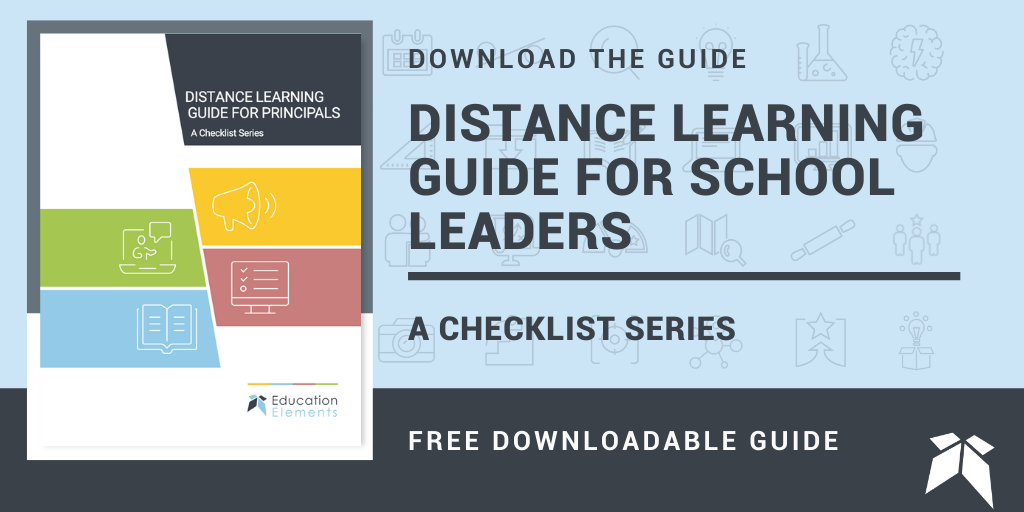
By: Dr. Courtney Bennett - Guest Author on August 21st, 2020
Making the Leap: A Strategy for Continuous Online Distance Learning in Rural Schools
Virtual Learning | District Leadership
Planning Amidst Change
“Aim small, shoot small,” is an old saying that many of us who occasionally enjoy a round of target practice embrace. But in our case, planning small for how to serve kids during this pandemic, simply was not going to work long-term. Our district Warren County is a rural county in Tennessee with a population of approximately 41,000 people. The entire district is considered economically disadvantaged and is served via the Community Eligibility Provision under the direction of the USDA.
This past spring, several principals in our district wanted to “do their own thing,” and utilize paper packets while others wanted to embrace the technology that we had available to us. Our district suddenly became a dichotomy of course content delivery.
One key learning from the spring semester. There really is something to be said for the acronym KISS. That’s right. Keep it simple, stupid.
By the end of the spring semester, it was becoming clear that COVID-19 was not going away. Our district was facing many challenges: from thinking of how to serve students this fall, to dealing with a sudden change of our district school director. Change was coming and it was coming quickly.
Laying the Foundation
In December of 2019, our local school board approved a hybrid distance learning program by which students worked on online course content from home. They were paired with a teacher on the Warren County Virtual Instruction Program (VIP) campus who was available to answer questions and offer help, but the students were predominantly able to work independently online while meeting progress and pacing expectations. Our pilot program, the WC VIP@Home launched in January of 2020.
In our case, we were blessed to have been laying the foundation for a true, distance learning option for students in Warren County prior to the viral outbreak. Had we not been forward thinking and planning for the bigger picture, we would have been decades behind in our ability to offer distance education. Not only did it prepare us for distance learning but it has also allowed us to support students move at different paces, and provide one-on-one feedback.
Digital Learning Opportunities
Fast forward to this summer. The Warren County Virtual Instruction Program (VIP@Home) was launched as a remote learning option for any students enrolled in our district in grades K-12.
Within the first 10 minutes, we had over 30 applications. As COVID-19, cases continue to rise, we noticed their continued discomfort with sending their students back to in-person school. Now we have 1,300 enrolled students!
The VIP@Home program offers a state aligned curriculum, matched with district pacing guides for students who wish to work from home. We require students to commit to a nine week minimum in which they will work online from home. We want students to be in our program long enough to benefit from it, while leaving the option open for them to return to school after the first nine weeks if they so desire. In the event that parents or students are still not comfortable going back into the physical classroom, they are able to stay in the VIP@Home program for an additional nine-week interval.
Benefits of Distance Learning
So, what is really so important about incorporating distance learning and online learning into the classroom on the daily?
According to US News and World Reports, based on federal data from more than 4,700 colleges and universities, more than 6.3 million students in the U.S. – most of whom were undergraduates, took at least one online course in fall 2016, a 5.6 percent increase from the previous year.
We can only expect this to continue to rise as more and more undergraduates shift to distance learning this fall.
The question begs, why are we not already providing online, distance learning courses to our students so that they are better prepared for the postsecondary world? COVID-19 forced educators who had been technological hold-outs to integrate distance learning into their curriculum. And, as our district began to plan for opening schools back up in August of 2020, our director sent a clear message to all teachers: make a plan that utilizes online curriculum content in your daily teaching. This way, at minimal, we are prepared if our entire district is forced to once again to close our physical school buildings.
Long-term, we must continue to utilize online, distance learning with students. If we don’t we are missing the opportunity to provide our students with one of the most necessary tools to be successful beyond K-12, one which is personalized to their pace and needs.
About Dr. Courtney Bennett - Guest Author
Dr. Courtney Bennett, Director of the Warren County Virtual Instruction Program in McMinnville, Tennessee has spent twenty two years serving rural school districts in Tennessee. Dr. Bennett began her teaching career in 1998 in a small school district in Tennessee which served approximately 800 students k-12. Dr. Bennett accepted a job as Instructor of Technology at Tennessee Technological University in 1999 where she taught technology courses in the College of Education. Dr. Bennett's job at the university was via the Pt3 (Preparing Tomorrow's Teachers to Use Technology) grant. During her time at Tennessee Tech, Dr. Bennett worked with rural schools in the Upper Cumberland area of Tennessee and helped them to better integrate technology into their curriculum. After the Pt3 grant concluded, Dr. Bennett returned to work in the public school sector and began developing ways to serve special needs students through the use of instructional technology. In 2015, Dr. Bennett became the Director of Adult Education for Warren County Schools and initiated a program to serve at-risk students online. One year later, the Warren County Virtual Instruction Program was born of her idea to provide online learning to all Warren county students. Having built an all virtual program prior to the CoVid19 pandemic, the Warren County School district was ready to provide digital learning to over 6,000 students when the global pandemic hit in March of 2020. Currently, there are over 1300 students enrolled in remote learning through the Warren County Virtual Instruction Program which is well over 20% of the student population for the district.


